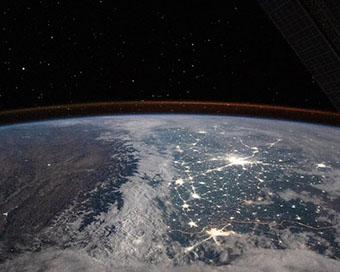Gallery
 PM Modi visit USA
PM Modi visit USA Only the mirror in my washroom and phone gallery see the crazy me : Sara Khan
Only the mirror in my washroom and phone gallery see the crazy me : Sara Khan Karnataka rain fury: Photos of flooded streets, uprooted trees
Karnataka rain fury: Photos of flooded streets, uprooted trees Cannes 2022: Deepika Padukone stuns at the French Riviera in Sabyasachi outfit
Cannes 2022: Deepika Padukone stuns at the French Riviera in Sabyasachi outfit Ranbir Kapoor And Alia Bhatt's Wedding Pics - Sealed With A Kiss
Ranbir Kapoor And Alia Bhatt's Wedding Pics - Sealed With A Kiss Oscars 2022: Every Academy Award Winner
Oscars 2022: Every Academy Award Winner Shane Warne (1969-2022): Australian cricket legend's life in pictures
Shane Warne (1969-2022): Australian cricket legend's life in pictures Photos: What Russia's invasion of Ukraine looks like on the ground
Photos: What Russia's invasion of Ukraine looks like on the ground Lata Mangeshkar (1929-2022): A pictorial tribute to the 'Nightingale of India'
Lata Mangeshkar (1929-2022): A pictorial tribute to the 'Nightingale of India' PM Modi unveils 216-feet tall Statue of Equality in Hyderabad (PHOTOS)
PM Modi unveils 216-feet tall Statue of Equality in Hyderabad (PHOTOS)The Badminton Association of India (BAI) has announced a 14-member-strong India squad for
- Men’s Sr Hockey Nationals to be played in division-based format from April 4
- Mensik denies Djokovic 100th title in Miami final
- KIPG: Son of a vegetable vendor, Bihar’s Jhandu Kumar eyes Worlds, 2028 Paralympics
- Hardik Singh credits hard work and team unity for receiving HI Midfielder of the Year award
- Djokovic, Alcaraz land in same half of Miami draw
NASA shares stunning pic of snow-capped Himalayan mountains Last Updated : 16 Dec 2020 10:03:31 PM IST 
NASA shares stunning pic of snow-capped Himalayan mountains NASA has shared a stunning picture of snow-covered Himalayan mountains captured by a crew member aboard the International Space Station (ISS).
The picture shared on Instagram has already received over 11.6 lakh "likes" on the platform."The snow-covered Himalayan Mountains are in splendid view in this enhanced, long-exposure image taken by a crew member aboard the @iss.," NASA said in the caption accompanying the photo."The highest mountain range in the world, the Himalayas are the result of 50 million years of collisions between the Indian and Eurasian tectonic plates."The picture also captures city lights of New Delhi from the orbiting laboratory."South of the range, or to the right from this perspective, lies the agriculturally fertile region of northern India and Pakistan," the US space agency said."North of the range, or to the left from this perspective, is the more arid Tibetan Plateau - the "Roof of the World".""The bright city lights of New Delhi, India, and Lahore, Pakistan, are also visible below the faint, orange airglow of atmospheric particles reacting to solar radiation," it added.IANS New Delhi For Latest Updates Please-
Join us on
Follow us on








172.31.16.186







